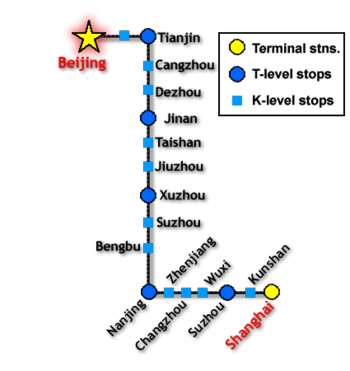Jinghu railway
The Jinghu railway is a train line running between Beijing and Shanghai in China through Tianjin, Hebei, Shandong, Anhui Jiangsu.
Jinghu railway is composed of three sections. The first section is from Beijing to Tianjin, sharing the same route with the Jingha railway. The second section is from Tianjin to Pukou and used to be called as Tianjin-Pukou Railway. Between Pukou and Nanjing there is Yangtze River. Trains used to be ferried across the river. The third section is from Nanjing to Shanghai. Those three sections are ones of the earliest railways in China, built in the early 1900s. After the Nanjing Yangtze River Bridge was finished in 1968, the three sections are jointed together, with a total length of 1462 kilometres.
The Railway line is the principle line between Beijing and Shanghai and one of the most busiest railway in China. It has dual tracks between Tianjin and Shanghai, three tracks between Beijing and Tianjin and the full length of the railway has been electrified. Passenger rail service now offers non-stop overnight service on Z1 and Z21 trains. Beijing-Shanghai Express Railway is expected to be constructed parallely to divert the passenger traffic from the overloaded Jinghu railway.

